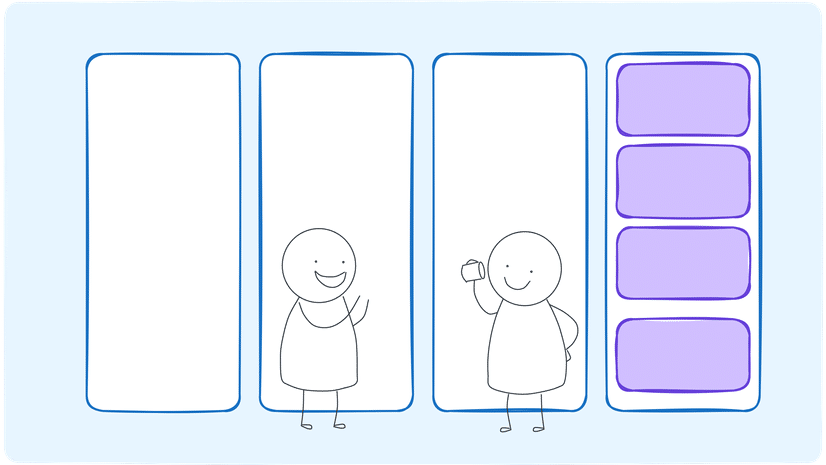Sprint retrospective
- In Agile
- by fixture-author
- Published
- Reading time

The purpose of the Sprint Retrospective is to plan ways to increase quality and effectiveness.
The Scrum Team inspects how the last Sprint went with regards to individuals, interactions, processes, tools, and their Definition of Done. Assumptions that led them astray are identified and their origins explored. The Scrum Team discusses what went well during the Sprint, what problems it encountered, and how those problems were (or were not) solved.
The Scrum Team identifies the most helpful changes to improve its effectiveness.
Structure
The teams discuss what went well throughout the sprint and what went wrong. The Scrum Master should encourage the Development Team to speak up and share not only facts but also their feelings. The goal is to gather rapid feedback for continuous improvement in terms of process. It’s also an opportunity to emphasize good practices that the team adopted and should repeat.
| Attendees | Development Team, Scrum Master, Product Owner (optional) |
| When | At the end of the sprint |
| Duration | max 2% – 45min/week |
| Outcomes | After this session, the team should clearly understand the problems and the wins that happened throughout the iteration. Together, the group comes up with solutions and an action plan to prevent and identify process problems in the next sprint. |
Common pitfalls
- A retrospective is intended to reveal facts or feelings which have measurable effects on the team’s performance, and to construct ideas for improvement based on these observations. It will not be useful if it devolves into a verbal joust, or a whining session.
- Being an all-hands meeting, a retrospective comes at a significant cost in person-hours. Poor execution, either from the usual causes of bad meetings (lack of preparation, tardiness, inattention) or from causes specific to this format (lack of trust and safety, taboo topics), will result in the practice being discredited, even though a vast majority of the Agile community views it as valuable.
- An effective retrospective will normally result in decisions, leading to action items; it’s a mistake to have too few (there is always room for improvement) or too many (it would be impractical to address “all” issues in the next iteration). One or two improvement ideas per iteration retrospective may well be enough.
- Identical issues coming up at each retrospective, without measurable improvement over time, may signal that the retrospective has become an empty ritual.
https://scrumguides.org/scrum-guide.html#sprint-retrospective